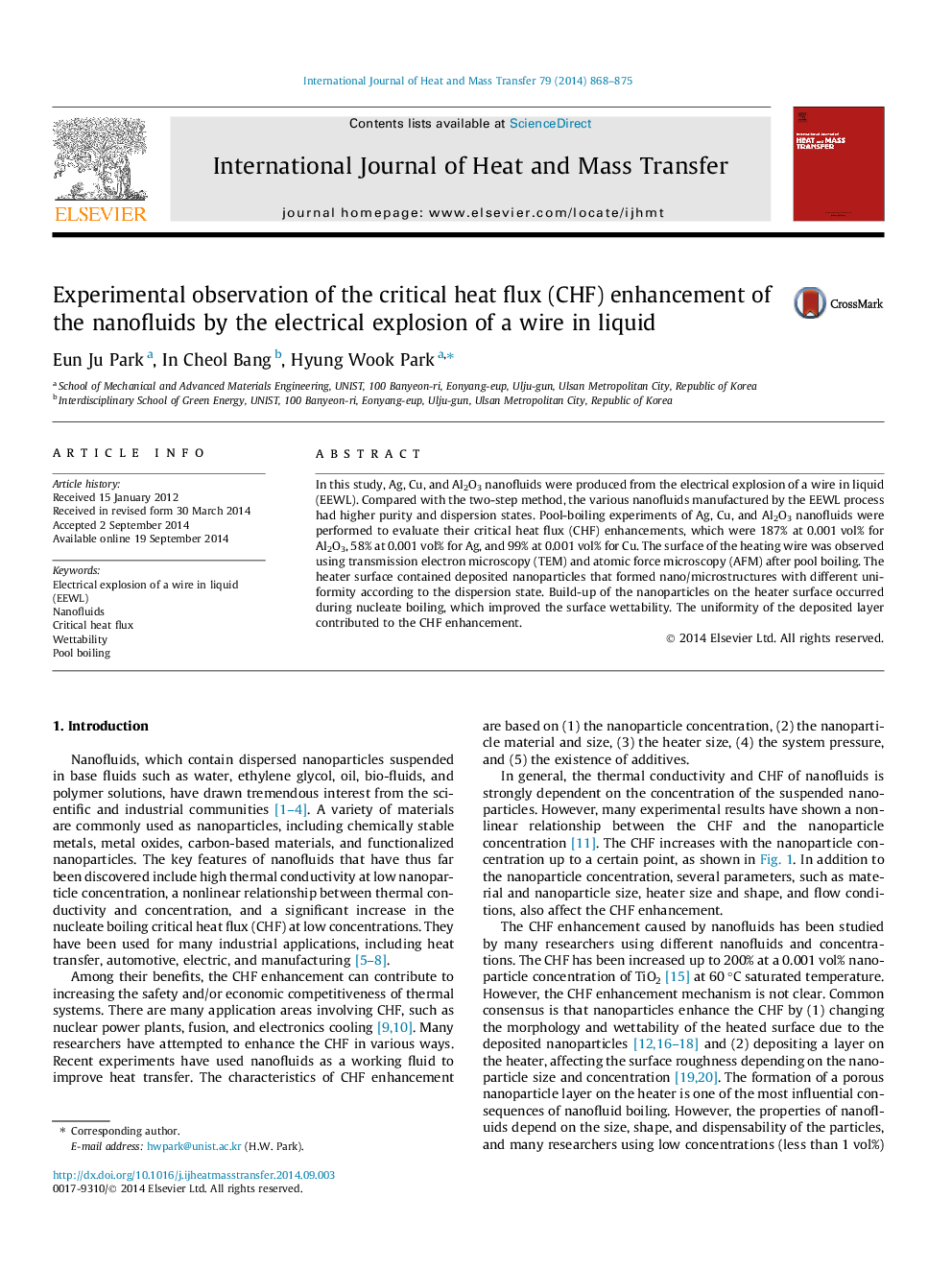| Article ID | Journal | Published Year | Pages | File Type |
|---|---|---|---|---|
| 657457 | International Journal of Heat and Mass Transfer | 2014 | 8 Pages |
In this study, Ag, Cu, and Al2O3 nanofluids were produced from the electrical explosion of a wire in liquid (EEWL). Compared with the two-step method, the various nanofluids manufactured by the EEWL process had higher purity and dispersion states. Pool-boiling experiments of Ag, Cu, and Al2O3 nanofluids were performed to evaluate their critical heat flux (CHF) enhancements, which were 187% at 0.001 vol% for Al2O3, 58% at 0.001 vol% for Ag, and 99% at 0.001 vol% for Cu. The surface of the heating wire was observed using transmission electron microscopy (TEM) and atomic force microscopy (AFM) after pool boiling. The heater surface contained deposited nanoparticles that formed nano/microstructures with different uniformity according to the dispersion state. Build-up of the nanoparticles on the heater surface occurred during nucleate boiling, which improved the surface wettability. The uniformity of the deposited layer contributed to the CHF enhancement.
